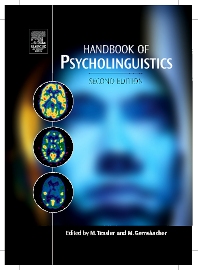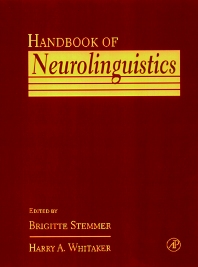Books in Neurolinguistics and psycholinguistics
Books in Neurolinguistics and psycholinguistics
- 1st Edition
- Volume 13
- R. Harré + 1 more
- English

Linguistics and Philosophy
- 1st Edition
- Volume 4
- Sharon Hargus + 1 more
- English

Studies in Lexical Phonology
- 1st Edition
- Volume 5
- English

Nasals, Nasalization, and the Velum
- 1st Edition
- W. I. Fraser + 1 more
- English

Communicating with Normal and Retarded Children
- 1st Edition
- Haiganoosh Whitaker + 1 more
- English

Studies in Neurolinguistics
- 1st Edition
- Harry A. Whitaker
- English

Concise Encyclopedia of Brain and Language
- 2nd Edition
- Matthew Traxler + 1 more
- English

Handbook of Psycholinguistics
- 1st Edition
- Yosef Grodzinsky + 2 more
- English

Language and the Brain
- 3rd Edition
- Martha Taylor Sarno
- English

Acquired Aphasia
- 1st Edition
- Harry A. Whitaker + 1 more
- English

Handbook of Neurolinguistics